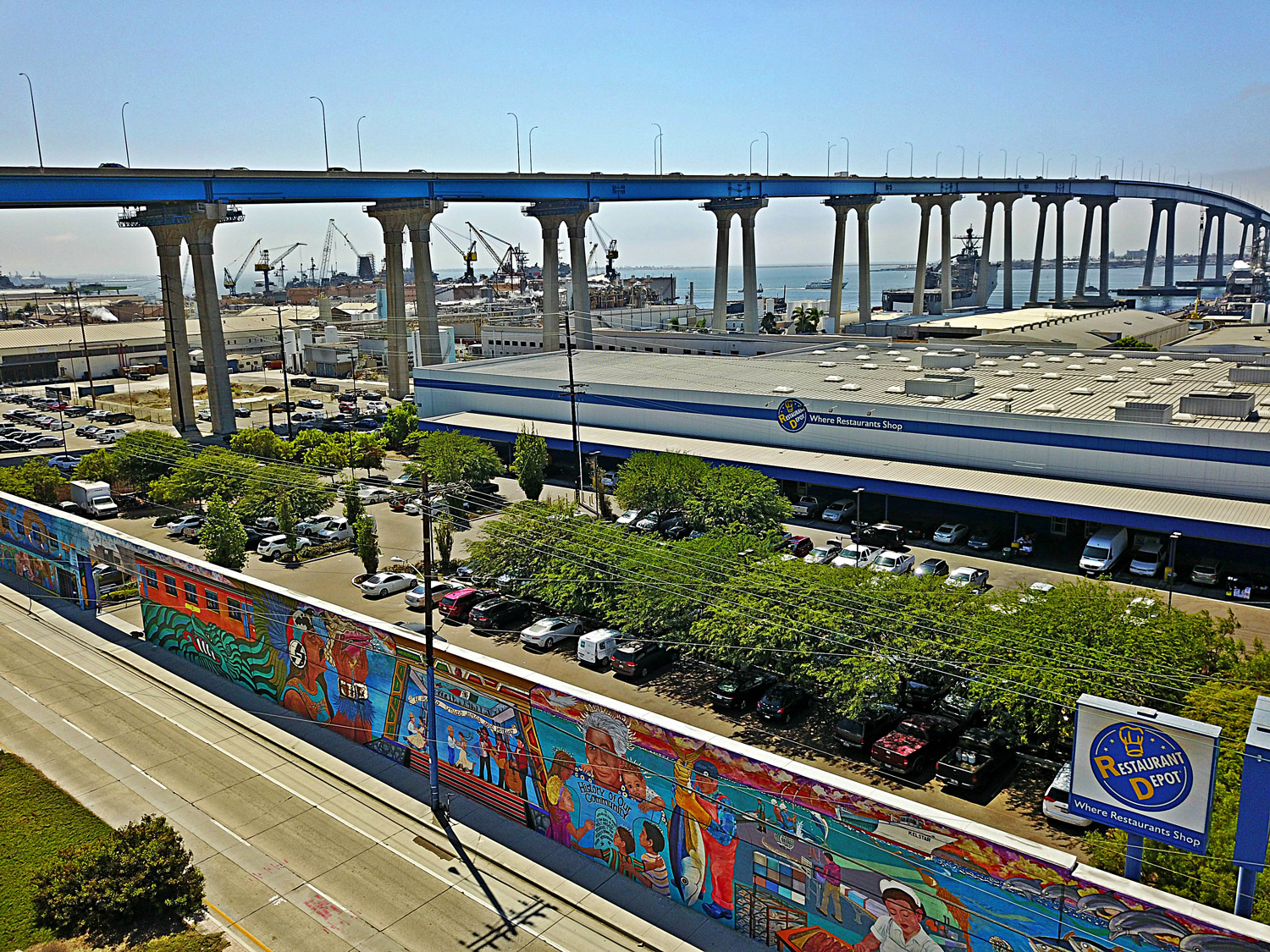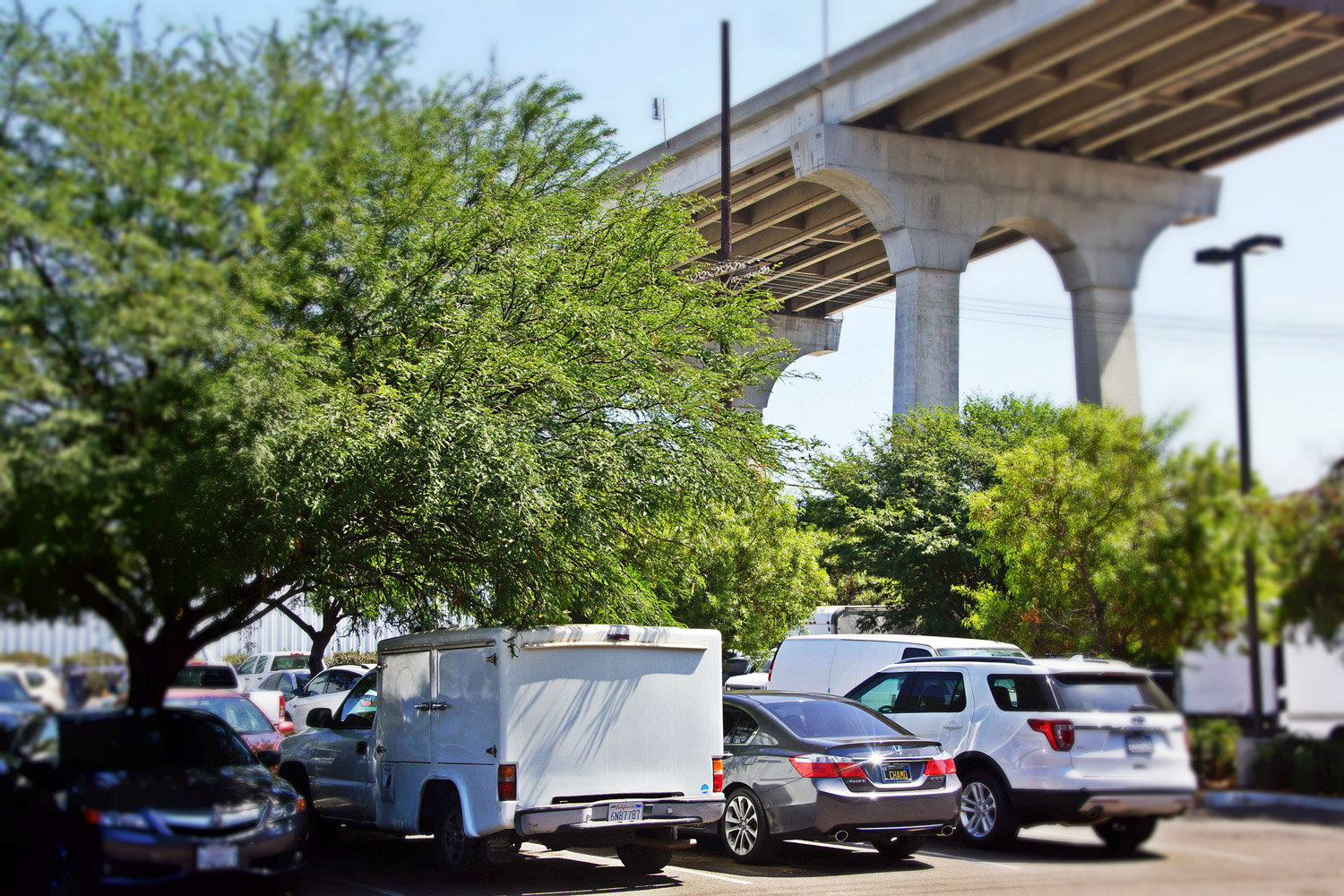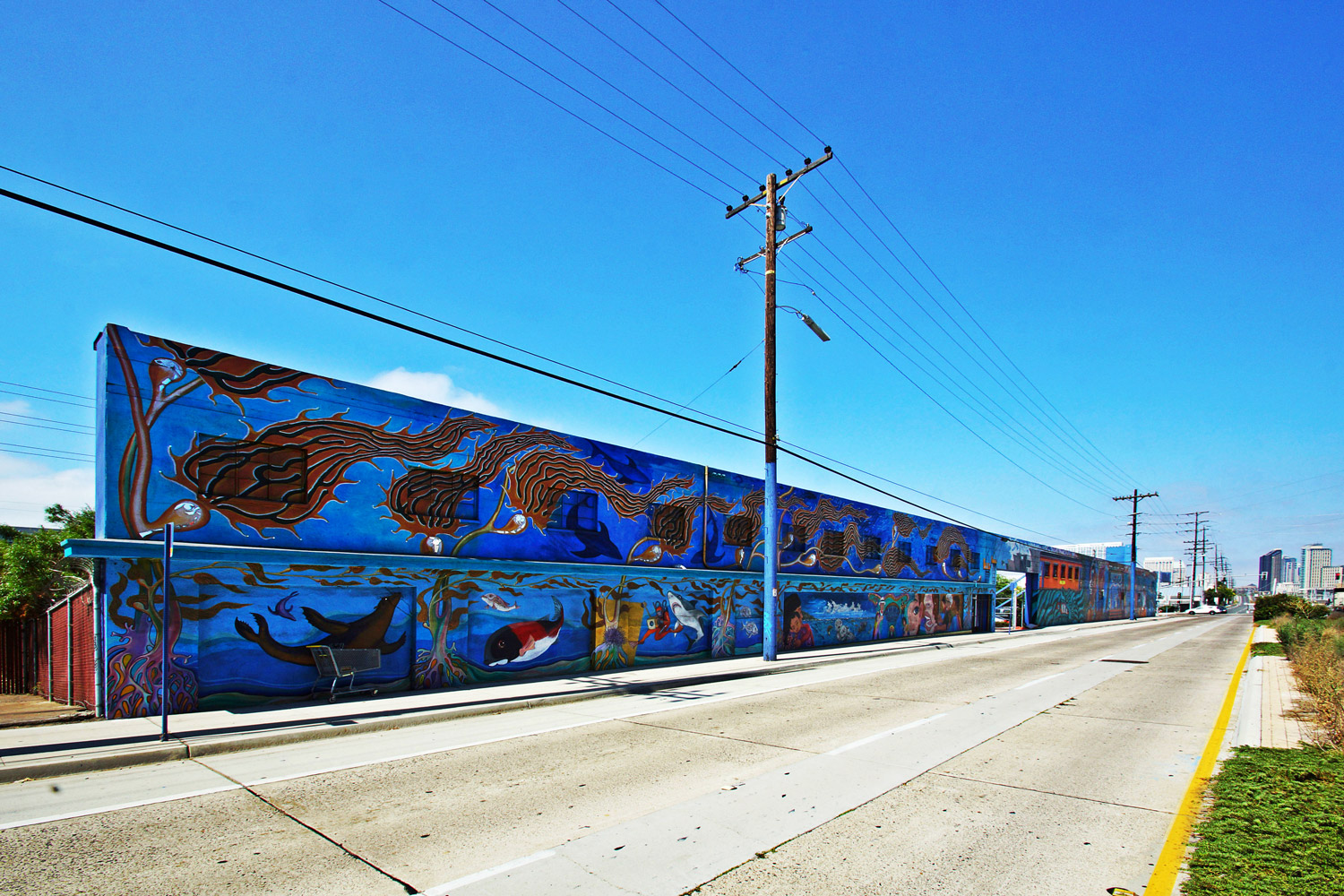Restaurant Depot: Merging Context with Grit, Soul and Style
Recently, I came across a project I had worked on years ago. Seeing it again, I reflected on the past I had honestly forgotten about. At the beginning of the project, the development seemed like just another small urban infill project. The project is located in an area south of downtown San Diego known as Barrio Logan. This town is home to a multi-generational Latino population where culture and history is woven into their daily lives.
Reflection on a Ten-Year Project
The project began when Restaurant Depot, an industrial-like commercial outlet, was flourishing and recognized they needed a new location for expansion. The company purchased an old industrial warehouse that they thought would be a simple demolition and rebuild. Quick, simple, and inexpensive—I am sure is what they had in mind.
As a business, the clients did not seem concerned about aesthetics or neighborhood context. But, as it happened the old building had been painted with a mural, The Kelco Historical Community Mural, by a well-known local artist, Salvador Roberto Torres. Of course, the community was vocal about not destroying the artist’s work.




A Community Speaks Out
For years, the residents and businesses of Barrio Logan felt they had been ignored and stepped on by local officials and politicians. The community started to make a lot of noise which got the attention of the city officials.Their efforts along with local planner Laura Black (arguably the finest in the city), made it clear to the developer that if they wanted to build on this parcel, the mural had to stay and the bar for commercial/industrial development had to be raised.
To the surprise of myself and others, the developer agreed. What seemed like another typical development suddenly became much more interesting. A precedent was set, the community spoke up, and a piece of their cultural identity was saved.
This was interesting to me because “what was”, would now become part of the design ethos for this site and “what will” took second in importance to the overall concept.
In other words, the community and the site context were given the most importance.
The developer was not originally happy about preserving the art, but conceded as they realized this is would make the project a reality. Being a pragmatist, I had concerns about the costs and whether this requirement would make for a viable business for the developer. But, our firm worked closely with the developer, the community, city planning staff and the architect to make it happen!
Challenges with Rewards
I must note there were some site challenges to overcome. Completed in 2009, this development was one of the first to require a bio-filtration area to treat storm water run-off from the site. All runoff from the building roof and parking lot is treated by the natural filtering qualities of plant material.
This bio-filtration area is thriving and a successful model of how effective this water quality measure can be.
In addition, the parking lot is filled with trees that shade it from the sun and contributes to the reduction of a larger regional concern. The “heat island” effect, where lack of shade on asphalt increases urban temperatures, can increase temperatures by more than 10 degrees.
Mutual Support
As I drove by this property, I pulled into their parking lot and reflected on this great project. I realized that the business was thriving and the development fits in its setting perfectly. The community is benefiting from this business and the business from the community. The project was completed nearly ten years ago and in retrospect, I personally could not be more honored to have been a part of it.
This project truly embodies a line taken from our firm’s vision statement:
We believe each environment unveils a unique narrative embodying creativity, diversity, discovery and conservation.
David McCullough, P.L.A.
Principal of McCullough
THE RISKS AND REWARDS OF INVESTING IN LEISURE
We are pleased to sponsor the next Bisnow event in San Francisco on September 20, Bay Area Hospitality & Lodging.
The vast changes in the bay area have many considering the future of the hotel and leisure industry. Innovation is the key to attracting tourists for unique experiences at affordable prices. Hotel brands are beginning to think beyond the limits of what they’ve done in the past to stay competitive.
Join us in a deep dive with experts from the industry as they discuss the future of the bay area’s hospitality market.



